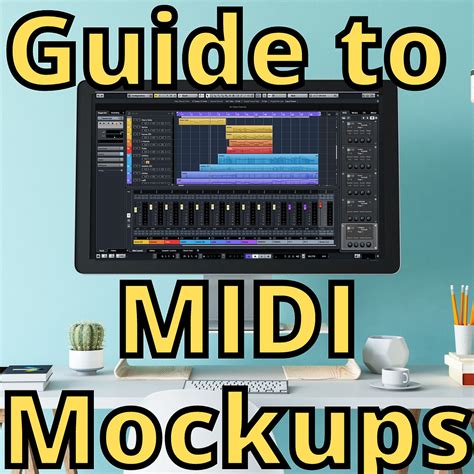Your Guide to Creating Stunning MIDI Arrangements
MIDI (Musical Instrument Digital Interface) files are the backbone of much modern music production. They're not the audio itself, but rather a set of instructions telling your digital instruments how to play. Mastering MIDI arrangement is key to crafting professional-sounding tracks, whether you're composing orchestral masterpieces or driving electronic beats. This guide will walk you through the process, from initial ideas to the final polished product.
What is MIDI Arrangement?
MIDI arrangement is the art of organizing and structuring MIDI data to create a musical composition. Unlike arranging with audio tracks, where you're manipulating pre-recorded sounds, MIDI arrangement involves arranging virtual instruments, allowing for extensive editing and experimentation. You control every nuance, from note velocity and articulation to instrument choice and effects processing.
Getting Started: Choosing Your DAW and Instruments
The first step is selecting your Digital Audio Workstation (DAW). Popular choices include Ableton Live, Logic Pro X, FL Studio, Cubase, and Pro Tools. Your choice often comes down to personal preference and workflow.
Next, you'll need virtual instruments (VSTs or AU plugins). These are software emulations of real-world instruments, synthesizers, and samplers. Choosing the right instruments is crucial for achieving the desired sound. Consider:
- Genre: Orchestral arrangements call for orchestral VSTs, electronic music might use synthesizers and drum machines, and so on.
- Budget: Some VSTs are free, while others are expensive. Start with free options to explore and gradually expand your library.
- Sound Quality: Look for instruments with realistic and high-quality samples.
What are the common types of MIDI instruments used in arrangement?
This is a question many beginners ask. Common types include:
- Software Synthesizers: These create sounds electronically, offering vast control over timbre and sound design.
- Sampled Instruments: These use recordings of real instruments, offering realistic sounds with less control over timbre.
- Drum Machines: These are specialized instruments for creating drum patterns and beats.
- Orchestral Libraries: These extensive libraries contain samples of various orchestral instruments, ideal for composing classical or film scores.
The Arrangement Process: From Idea to Masterpiece
Once you have your DAW and instruments, you can start the arrangement process:
-
Sketching the Idea: Begin with a basic melody and harmony. Use MIDI to quickly experiment with different ideas. Don't worry about perfection at this stage; focus on capturing your creative vision.
-
Developing the Arrangement: Expand your initial sketch. Add counter-melodies, harmonies, basslines, and rhythmic elements. Experiment with different instrument combinations and textures.
-
Structuring the Song: Organize your sections (intro, verse, chorus, bridge, etc.). Consider the overall flow and pacing of the music. A well-structured song is crucial for creating a compelling listening experience.
-
Adding Detail and Nuance: Refine your MIDI data. Adjust note velocities, add subtle timing variations (humanization), experiment with different articulations, and use automation to create dynamic changes in volume, pan, and effects.
How do I humanize my MIDI to make it sound more natural?
Many beginners struggle to make their MIDI arrangements sound less robotic. Humanization techniques include:
- Velocity Variation: Add random variations in note velocity to mimic the natural dynamics of a human performer.
- Timing Variation: Slightly adjust the timing of individual notes to create a more natural feel. Most DAWs offer built-in tools for this.
- Note Length Variation: Add slight variations in note length to prevent a stiff and mechanical sound.
Mixing and Mastering Your MIDI Arrangement
Once you have finalized your arrangement, it's time to mix and master. This involves adjusting levels, EQ, compression, and other effects to achieve a balanced and polished sound. Consider these points:
- Balance: Ensure that all instruments are properly balanced in the mix, preventing any instrument from overpowering others.
- EQ: Use equalization to shape the tone of individual instruments and remove unwanted frequencies.
- Compression: Use compression to control dynamics and add punch to your sounds.
- Reverb and Delay: Add reverb and delay to create depth and space in your mix.
What are some common mistakes to avoid when arranging MIDI?
Common mistakes include:
- Over-cluttering the arrangement: Less is often more. Avoid adding too many instruments or parts that distract from the main melody.
- Ignoring dynamics: A dynamic arrangement is more engaging than a static one. Use automation to create interesting changes in volume and other parameters.
- Neglecting the mix: A great arrangement can be ruined by a poor mix. Spend sufficient time mixing and mastering your project.
Conclusion: Embrace the Creative Journey
Creating stunning MIDI arrangements is an iterative process that requires patience, experimentation, and a keen ear. Don't be afraid to experiment, try new things, and learn from your mistakes. With practice and dedication, you can transform your MIDI ideas into captivating musical experiences. Remember to focus on creating music that resonates with you and your listeners, and most importantly, have fun!

